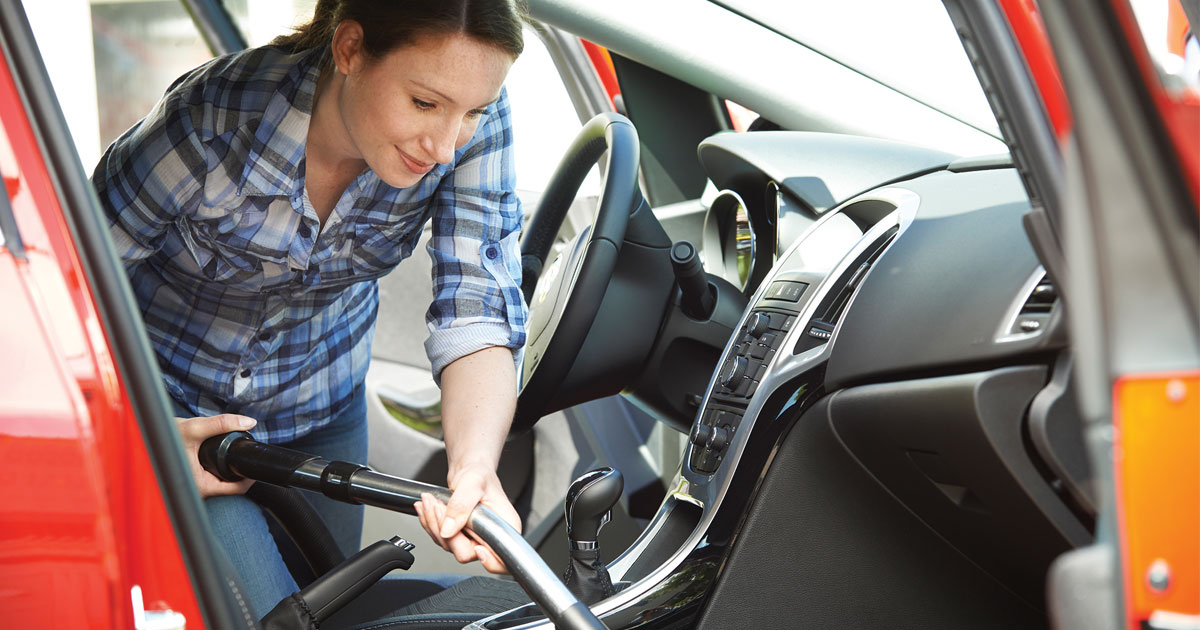When the majority of our activity is spent seated in a vehicle, it takes hours to a few days to realize the fresh and clean upholstery requires a touch-up. Accidents happen, whether it is an on-the-go meal or a spilled drink. No matter whether the interior is leather, cloth, or carpet, it does not take long for stains to appear. Here are a few tips to help you tackle messy situations.
Keep a Wide Range of Supplies
Preparation is the key when situations occur, especially while you are on the road. While you may not have the available time to remove a stain or spill, a few supplies can make a difference; therefore, consider keeping a few clean rags, a bottle of water, baking soda, plastic bags and gallon-sized Ziploc bags, and glass cleaner in your vehicle.
The difficulty with spray-on cleaners is they release a toxic smell, which tends to linger and intensify in small spaces. For liquid situations such as blood, spilled coffee, or vomit, immediately dilute the location with cool water and start blotting. Baking soda is a key ingredient to help saturate into the fibers or ease a stain on vinyl that needs to be removed (it has the ability to pull up the stain; therefore, do not blot). Allow the baking soda to sit, and vacuum when you have the chance. Use Ziploc bags or plastic bags to contain the rags and smell. (Don’t forget about them!)
Ink Stains
One handy fact is ink can be removed with hairspray. After application, allow the chemical to absorb for a few minutes. You can reapply if needed. Then, dab dry.
A Different Method to Challenging Upholstery
Thick woven fabric is a challenge to clean. Try using a cup of ammonia with a pint of water. A mop may be recommended for this process; the goal is to allow the diluted ammonia to absorb into the fabric. Afterward, blot the excess water.
Grease Stains
Use a utensil to scrape off dried grease; however, if the stain is wet, then blot the excess grease using a damp towel or cloth. Sprinkle baking soda, covering the stain, and allow the grease to absorb from the upholstery for up to 20 minutes. It is important to not dab the stain to push the grease down into the material. Vacuum.
Deep Cleaning
Not all upholstery requires the same means of cleaning. For instance, fabric can be cleaned by mixing a cup of vinegar, and dishwashing soap in a gallon of hot water. A hard-bristled brush can ease the ingredients into the fibers. After 30 minutes, rinse with a rag and clean water, and absorb the remaining water.
- Leather can be cleaned with a cloth soaked in a mixture of water and low-pH soap.Once wiped clean, allow to dry thoroughly. Apply a leather conditioner to prevent drying or cracking.
- Vinyl is easily cleaned with a sprinkling of baking soda directly on the seats and scrubbed with a damp rag. Afterward, rinse with a wet cloth. Do not apply oil or mineral based cleaners to the vinyl. In time, the vinyl will become rigid, and quite uncomfortable.
After shampooing a material, consider applying a fabric protector to ease the process of cleaning future stains.
An All-Purpose Cleaner
There are a number of factors to consider when cleaning upholstery.
- How old is the stain?
- What is the composition of the stain?
- What type of fabric are you cleaning?
- What cleaners have you tried?
Not all upholstery shampoos and cleaners can solve the problem. It is important to read the label to determine if the cleaner you have chosen is recommended for leather, general upholstery shampoos, or carpet. Natural cleaners such as baking soda, vinegar, soap, and water have the power to remove difficult stains at a fraction of the cost of commercial brands. Keep trying. With continued application, many stains can be removed in time.






















